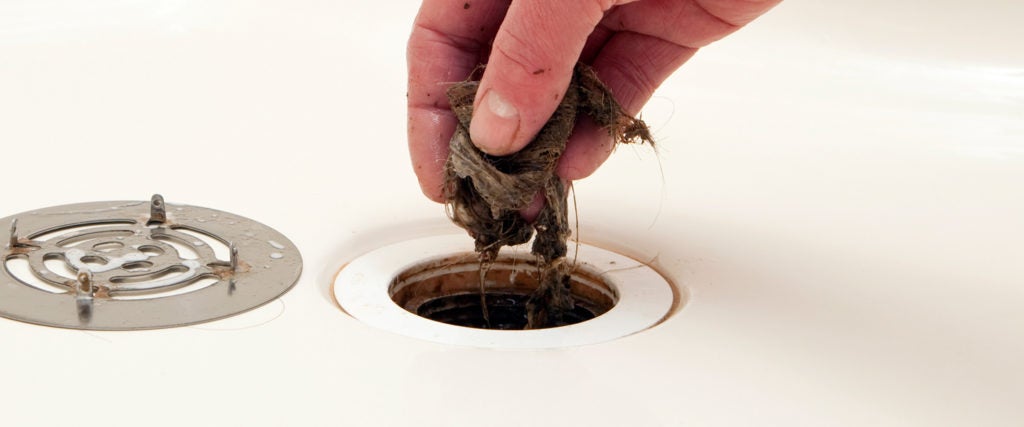There’s almost always a glob of my hair clung to the walls of my shower. I put it there intentionally so I can throw it in the trash and not clog the drain. It’s an abject sight, and my boyfriend hates it, but art is controversial, you know?
Try as I might, though, I can’t prevent all the hairs from going down the drain. Plus, whenever I shave, I’m just sending little minis down there, too. It adds up. You’d think it would all just float away to the nearest water treatment facility, but as the plumber who spent an hour snaking the bathtub in my apartment the other day can attest, it might not.
Say I wanted to wait for that problem to go away on its own. Depending on the conditions in my drain, including water quality, moisture level and the presence of oils and other ingredients from shower products, it could take anywhere from a few months to several years for the hair to disintegrate naturally. This is actually a problem for waste management systems globally: Even if it passes through our own drains, it accumulates somewhere.
According to an academic review written by Ankush Gupta at the National Institute of Science, Technology and Development Studies in India, for the Journal of Waste Management, human hair presents a particular problem for sewage systems because it builds up in large masses. In some parts of the world, the solution is to burn the hair or utilize open-air hair dumps, both of which are harmful to the health of nearby people.
Gupta suggests in his review that hair waste should instead be recycled and utilized, as has been historically practiced. Wig making is one of the more obvious uses, but human hair is apparently also good for fertilizer, textiles and pharmaceuticals, as well. Gupta even proposes that human hair has a place in the food industry, stating, “Many amino acids obtained from human hair such as L-cysteine are also used in the food industry as leavening agent for pizza dough and doughnuts, for artificial meat flavor, in nutritional supplements and so forth.”
Exactly how hair waste is managed in the U.S. varies from city to city. Some say to put hair in the trash, while others say hair should be composted. For most of us, though, our hair is probably going to just end up down the drain. The hair that makes it ends up at a water-treatment facility, and is probably processed along with the other “solids.” In L.A., this solid processing generates electricity for power plants and produces fertilizer.
But some of the hair won’t make it that far, and will end up stuck in your drain. Rather than wait for nature’s death cycle to take hold, you can just dissolve it yourself. Drano and other strong pipe-cleaning products should be used as a last resort: Instead, apple cider vinegar, baking soda and salt, flushed with boiling water or straight bleach, should do the trick fine without damaging your pipe. Alternatively, you can try snaking it yourself and manually removing the hair to throw in the trash.
Honestly, every single option here absolutely horrifies me. There are few things more repulsive than pulling hair out of a drain — one of them is the concept of a big mass of everyone in the city’s hair lumped together in grease and shit, and the other is imagining human hair in pizza dough. I’ve never read Industrial Society and Its Future, but I imagine this aspect of civilization specifically is what the Unabomber took issue with.

